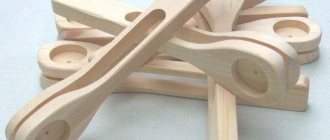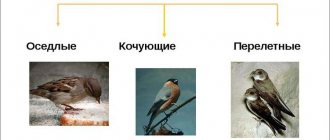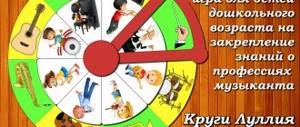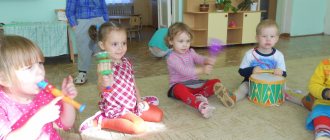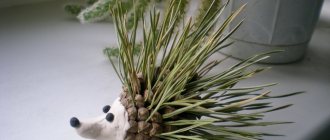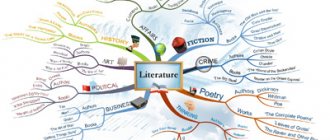Plastic sketches as a means of psychological relief for a child
Dear friends, we are pleased to introduce you to Dina Ivanovna Emelyanova, a teacher at MADOU No. 85 “Bell”, Veliky Novgorod, Novgorod region. Today Dina Ivanovna is happy to share with us her professional experience in psychological relief for a child. The article will be of interest to teachers and interested parents.
A short comment on the article from Dina Ivanovna:
“In the process of work, we noticed that the plastic sketches that we learn and create have a beneficial effect on children, help to develop communication skills, and express accumulated emotions. Therefore, we set ourselves another goal: to use plastic sketches to create a good mood throughout the day, efficiency, goodwill, establishing trusting relationships, creating a sense of security and comfort.”
Fascinating reading...
Plastic sketches as a means of psychological relief for a child.
The Development program (L.A. Wenger) has additional sections. One of them interested us, as educators, very much. This is the Expressive Movements section. According to the authors, the teacher’s work in this section is aimed at developing preschoolers’ creative abilities, on the one hand, and non-verbal communication, on the other. This type of creativity, when a child creates images through his own body, corresponds to the motor nature of children's imagination and is optimal for its development. In the process of work, we noticed that the plastic sketches that we learn and create have a beneficial effect on children, help to develop communication skills, and express accumulated emotions. Therefore, we set ourselves another goal:
- use plastic sketches to create a good mood throughout the day, efficiency, goodwill, establishing trusting relationships, creating a sense of security and comfort.
In the second younger group, children gather together, some from the nursery, some from home. The group is still “stranger” for them, both children and adults are strangers too. Our main task is to make children feel free, but in a team where you are accepted and protected. It is necessary to help “inhabit” the group’s space by creating images of toys through the simplest figurative and plastic non-verbal interactions accompanied by music or using artistic expression.
For example: Exercise “Peas”.
The teacher calls the children and invites them to play. Explains the rules: all children are peas; they “scatter” in different directions at a signal, the teacher, holding his hand in front of him, seems to release the peas clenched in his fist and say: “The peas scattered.” The children run away. Then the teacher again, with a word and gesture, “collects peas into a handful” - the children run to him.
It seems like a very simple exercise, but very capacious. Children are not ordered to do anything, they play a role. As they scatter around the room, they learn to interact: they need to “roll” in such a way as not to knock anyone over, and “roll back” to a free space themselves; They get acquainted with the space of the group, returning to the teacher, they can snuggle up to him, to other children (“It’s not so scary anymore, I’m not alone!”). A similar exercise is “Thread and Needle”.
The main place in the life of children in the group is occupied by toys. Love for them is transferred to relationships with others. Therefore, by creating the image of toys, children master the space of the group even more deeply, and by controlling their bodies, they express a variety of emotions. For example: Exercise “Humpty Dumpty”.
The teacher shows the children Humpty Dumpty (for us it is a doll Parsley) and invites them to look at his movements (the teacher turns the doll so that its arms and legs dangle in different directions), then the children play Humpty Dumpty, imitating the movements of an adult and speaking rhythmically words:
Humpty Dumpty was sitting on the wall (at each word, the body turns sharply, first in one direction, then in the other, sweeping its arms around itself)
Humpty Dumpty fell down in his sleep (relaxedly drop his body forward, head and arms hanging down).
This exercise relieves muscle tension well, as do others: “The ball is jumping” (jumping on two legs), “The top is spinning” (spinning, stopping, falling). In addition, as a rule, children laugh, and this creates a good mood.
After the children have gotten used to the group, got to know each other and become friends, we introduce more complex plastic studies. For example, based on the poems of A. Barto - “The Horse”. After reading the poem, the teacher invites the children to try to show with their movements how they can “comb” the horse for fun), and then in pairs they do the exercise “Taking care of the horse.” Children interact with each other in pairs in accordance with play roles. The “owner” tries to reliably convey the imaginary actions of “combing” the horse, walking around it from different sides, carefully touching the mane and fur. The teacher suggests: if the “horse” likes the way it is looked after, let it thank the owner (nodding its head), but if it doesn’t like it, let it also express it with a movement (it hits the ground with its hoof, shakes its head). The teacher asks how else you can take care of the horse. “Feed, water”... at the same time the “owner” looks at the horse: is it comfortable for him to eat and drink, and the “horse” either bends towards the outstretched palms of the “master”, then straightens up, imitating “chewing food” or “swallowing”, and when satisfied , nods his head gratefully. Next, the children change roles.
In the same way, exercises “Teddy bear”, “Playing with a ball”, “Ball burst”, “Fixing a burst ball”, “Rag and wooden dolls”, etc. are performed. In addition to the poems of A. Barto and S. Marshak, we definitely use musical works.
In the middle group, children increasingly learn pair interaction. Therefore, sketches turn into small performances accompanied by music. For example, to help children get rid of aggressiveness with the help of gestures, facial expressions, and energetic movements, we use the game “The Wolf and the Hare” accompanied by fragments of Prokofiev’s music “Peter and the Wolf.” Children break into pairs and agree on who is the Hare and who is the Wolf. Hares are placed on one side, Wolves on the other, each opposite their partner. The teacher tells the story: “One day the Bunny, hiding from the Wolf, ran into a toy store. He rushed here and there - there was nowhere to hide. Then he jumped onto the shelf with toys and froze, pretending that he was not alive, but a toy.” Children-Hares freeze in different poses. The Wolf appears, evil and despicable. He slowly approaches his Bunny, peers at him, sniffs him, trying to understand whether he is alive or a toy, walks around him, sniffs him again. And the Bunny pretended so well that the Wolf believed him, he had to leave with nothing. The Wolf leaves, and he himself looks back angrily at the Hare, bares his teeth in annoyance that he was unable to catch the prey, and clicks his teeth.” The children do all this in accordance with the role, the aggression goes away, everyone is happy. If one of the children is sad, we perform the “Funny Buffoons” sketch, when everyone can come up with any funny movements to the music of A. Averkin “Buffoon”.
At an older age, work is carried out at a new level, since children are already capable, thanks to their increasing psycho-physical capabilities, of implementing more complex game content. The tasks are also becoming more complex. At an older age, children act out scenes from the fairy tales “Kolobok”, “Turnip”, “Cat, Rooster and Fox”, etc. We do not show the fairy tale “Kolobok”, we act out plastic sketches based on various scenes from the fairy tale: “Preparing dough”, “Baking” Kolobok”, “Kolobok is rolling along the path”, etc. We convey images through facial expressions and gestures. Children really love transformation sketches: “Clouds”, “Snowdrop Grows”, “Magic Flowers”, “Wind”, “Baba Yaga”, etc.
The music that accompanies these plastic sketches helps children move their whole body, show all possible emotions, and reveal their inner world.
Thus, plastic sketches help us make a child’s stay in kindergarten comfortable, relieve a variety of difficulties, and solve many problems. And most importantly, they give the child the opportunity to express himself through facial expressions and gestures.
Plastic studies in music classes at preschool educational institutions
Albina Vashkina
Plastic studies in music classes at preschool educational institutions
“Rhythm is not limited, and therefore the possibilities of its physical implementation are innumerable.” E. J. Dalcroze
While listening to music with children in music classes, I increasingly began to notice that many children did not react to of music or pretended to listen; Many children find it difficult or embarrassed to express their emotions and talk about the image they heard.
I started having questions:
1) maybe they don’t understand what it means to listen and hear music ?
2) maybe they are afraid to speak out, embarrassed in front of their peers?
3) maybe it’s all about the physiology of a particular child?
4) maybe the family doesn’t like music or for reasons of religion (like
It turned out in one of the cases) the child was forbidden to express his emotions, etc.
All these questions required an immediate search for the right solution. And I first showed the rhythm of the march music , knocking on my knees with a contented look, and the children immediately began to repeat after me. Many "difficult"
Emotions began to appear in the children.
To music of a calm and serene nature, I asked the children to repeat all the movements after me and showed smooth swaying of the body from right to left and hands - a smooth “swing”
.
The children repeated again. To the music of the polka, I asked the children to come up with their own movements. This task did not cause much difficulty, because they already knew the movements from their musical and rhythmic experience . In order to continue working with children in the direction of a “spiritualized”
gesture, I turned to methodological literature and began to research the issue that interested me.
Having studied new teaching technologies from leading teachers, I became interested in plastic intonation , because expressive plasticity is one of the natural foundations of intonation. A large place in the development of creative abilities and initiative is occupied by the performance of simple musical etudes .
A sketch is a sketch , an improvisation. Etudes can be considered as small plot and non-story games of a creative nature, performed by a group of schoolchildren and individually.
By performing etudes , preschoolers learn to accurately correlate certain movements with the nature of the music , choosing and coordinating walking, running, jumping and other movements with it.
What is the development of creativity and imagination? The content of the etude remains the same , but the details of the performance may change depending on how the child feels the musical image and makes additions in accordance with his imagination.
Sketches can be plot-based (with a given text)
and non-story ones, where schoolchildren learn to comprehend the alternation of parts and, in accordance with this, change movement.
The method for initially learning an etude is similar to the method for learning a game.
Stages of work:
1. Preparatory conversation about music .
2. Listening to a piece of music .
3. Analysis of individual parts and musical phrases .
4. Analysis of means of musical expression .
5. Demonstration of a performance option accompanied by music by a music director .
6. Demonstration of movements by children without music .
7. Performing a sketch by children .
In a group sketch, shy, inactive children move more freely. An individual sketch requires the concentration of all strength and skills.
Possible repetition of etudes (but not unlearning)
.
It makes it possible to deepen a previously created image, perform details more expressively, and improve the coordination of movements with music .
Thus, performing etudes as the most complex creative tasks enriches preschoolers with musical impressions , develops the ability to freely act out the content of songs, and convey the figurative content of instrumental music .
"Wind and Breeze"
Program content.
Continue to develop the skill of distinguishing dynamic shades and reflecting them in movement, changing the strength of muscle tension in the hands. Promote the development of coordination of movements.
Description.
1–8 measures. The breeze gently sways the branches of the trees. The leaves barely move. Children raise their hands up and move them in different directions.
9 -12 measures. The wind has risen so much that it seems that a thunderstorm is about to begin.
Children put one leg to the side and throw their body to the left and then to the right. Hands follow the body.
13 -16 measures. A strong wind swept past, and a small breeze came again. Children perform movements of 1 - 8 beats.
Methodical instructions.
The guys’ hands should remain soft all the time, without unnecessary tension in the shoulders and muscles.
"Flowers".
Program content.
Develop children's creative imagination. The ability to act with imaginary objects, clearly coordinating your movements with music . Achieve smooth, soft movements.
Description.
Each child holds a flower (imaginary)
. In front of them
An imaginary stream.
Beat1. Smoothly raise your right hand. Simultaneously with the movement of the hand, the head turns
Children seem to admire a flower.
Beat 2. The hand lowers smoothly. The child follows with his gaze
hand movement.
Bars 3 – 8. The movements of the previous bars are repeated.
Beat 9. Take 3 steps forward (go to the stream)
.
Beat 10. Throw an imaginary flower into the stream (right hand)
.
Measures 11 – 12. Same with the left hand.
Beat 13. Take 3 steps towards the stream.
Beat 14. Standing.
Bars 15 -16. They step back, waving their hands, saying goodbye to their
flowers.
The simplest and favorite form of musical movement for children is musical exercise . It develops coordination and motor skills, thereby preparing students for musical achievement . This is where the intersection of the subjects of music and physical education , which many schoolchildren do not like, is rooted in. But as soon as this subject is connected with music , it will become the most favorite for preschoolers). Simple exercises for the head, neck, shoulders, arms. Trunk exercises to music are useful and develop a sense of rhythm, tempo, and coordination of movements in accordance with the music .

